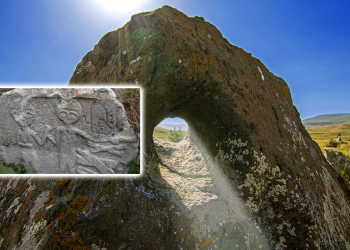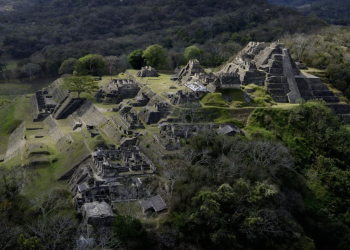For centuries, the Great Wall of China has stood as an enduring symbol of strength and strategic military defense. But a new discovery in Shandong Province just rewrote the history books. Archaeologists have uncovered evidence suggesting that certain sections of the wall were built nearly 300 years earlier than previously thought—reshaping our understanding of this legendary structure.
Between May and December 2024, archaeologists led an excavation in Guangli, a village in the Changqing district of Jinan. The research team analyzed a 1,100-square-meter area, applying optically stimulated luminescence (OSL) dating and radiocarbon analysis to examine soil layers, plant silica, and animal bones.
The results were astonishing: early defensive walls in this region date back to the Zhou Dynasty’s Spring and Autumn Period (1046–256 BCE), making them the oldest known sections of the Great Wall.
This discovery challenges the widely accepted belief that large-scale construction began during the Warring States Period (475–221 BCE) under the Qi State. Instead, it now appears that ancient Chinese rulers were developing sophisticated fortifications centuries earlier.

What Archaeologists Found
The excavation site revealed multiple layers of historical development, showing how defensive structures evolved over time. Among the most remarkable discoveries were:
- Ancient fortification walls: The earliest sections measured 10 meters wide, while later reinforcements expanded the width to an astonishing 30 meters.
- Underground residences: Two homes from the Zhou Dynasty were discovered beneath the wall, suggesting that settlements existed in the area before major construction efforts began.
- Military outposts and roads: Defensive infrastructure, including sloping banks, trenches, and pathways, provided insight into the strategic planning of ancient Chinese states.
According to Zhang Su, the project leader from the Shandong Provincial Institute of Cultural Relics and Archaeology, the discoveries point to a “highly developed military defense system” that predated known historical records.
What This Means for History
This discovery raises a key question: If some sections of the Great Wall were built centuries earlier than historians believed, how much more is waiting to be uncovered?
Liu Zheng, a researcher with the Chinese Society of Cultural Relics, called this “the earliest known Great Wall in China,” emphasizing its significance in understanding early Chinese military strategy.
Beyond defense, the newly analyzed structures suggest the wall also served as a critical tool for controlling trade routes and monitoring population movements. Its connection to Pingyin City—an important hub mentioned in historical texts—reinforces the idea that the wall played an essential role beyond warfare.
With this revelation, archaeologists are now re-examining other parts of the Great Wall to determine if even older sections exist. Future excavations could completely redefine what we know about the origins of one of the world’s most famous structures.











